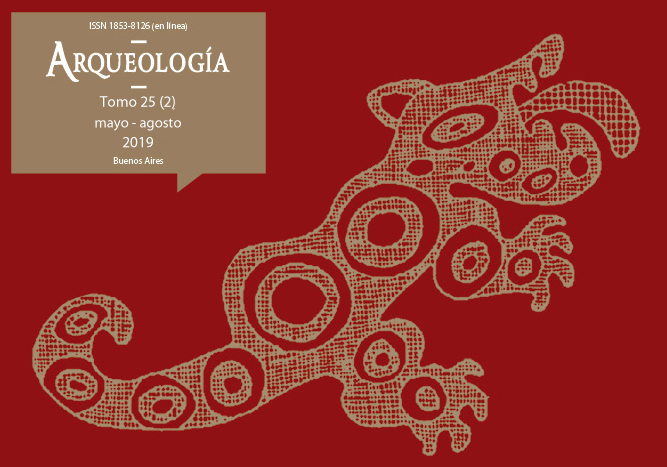Determinación de estacionalidad de muerte en dientes de pinnípedos: el caso del sitio Cueva del Negro (Patagonia Argentina)
Keywords:
Otaria flavescens, Estacionalidad, Patagonia, Cazadores-recolectores, Ocupaciones costeras
Abstract
En este trabajo se presentan los primeros resultados de los estudios de estacionalidad de muerte obtenidos sobre dieciocho dientes de pinnípedos (Otaria flavescens) recuperados en el sitio Cueva del Negro (costa norte de la provincia de Santa Cruz, Patagonia Argentina). Los mencionados análisis nos permitieron plantear un potencial patrón de captura de dichas presas y forma de uso de un espacio puntual. Las tendencias preliminares sugieren una explotación de pinnípedos orientada hacia el verano e inicios de otoño, más precisamente entre los meses de enero y abril. Ello reflejaría una marcada estacionalidad en relación con el aprovisionamiento de las presas, lo que podría explicarse en función de las estrategias de movilidad y modo de subsistencia de los grupos humanos que habitaron el área. En este sentido, los resultados se discuten en función de información paleodietaria y los antecedentes arqueológicos disponibles.Downloads
Download data is not yet available.
Published
2019-06-01
How to Cite
Ambrústolo, P., Zubimendi, M. A., & Crespo, E. (2019). Determinación de estacionalidad de muerte en dientes de pinnípedos: el caso del sitio Cueva del Negro (Patagonia Argentina). Arqueología, 25(2), 247-262. https://doi.org/10.34096/arqueologia.t25.n2.6886
Section
Reports
Copyright (c) 2019 Pablo Ambrústolo, Miguel A. Zubimendi, Enrique Crespo

This work is licensed under a Creative Commons Attribution-NonCommercial-ShareAlike 4.0 International License.
Authors who publish in this journal agree to the following conditions:
- Authors retain copyright and yield to the journal right of first publication with the work registered with attribution license Creative Commons, which allows third parties to use the published always mentioning the authorship of the work and first publication in this magazine.
- Authors can make other independent and additional contractual arrangements for the non-exclusive distribution of the version of the article published in this issue (p. Eg., Inclusion in an institutional repository or publish it in a book), provided that clearly indicate that the work was published for the first time in this magazine.
- It allows and encourages the author / s to publish their work online (eg institutional or personal pages) before and during the process of revision and publication, as it can lead to productive exchanges and greater and more rapid dissemination of work published (See The Effect of Open Access).





(1)13.png)






1.jpg)
1.jpg)


13.png)
1.png)


(1)1.png)









